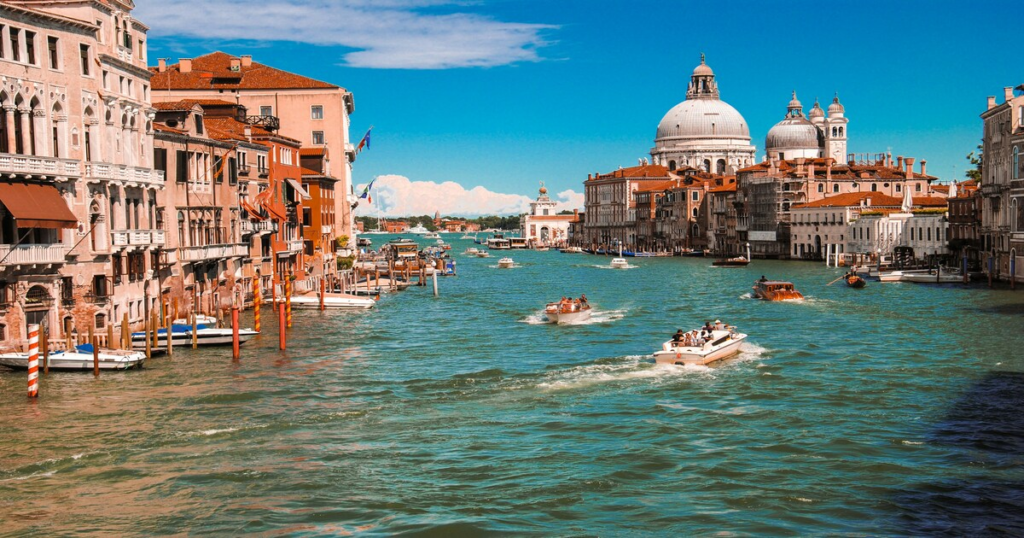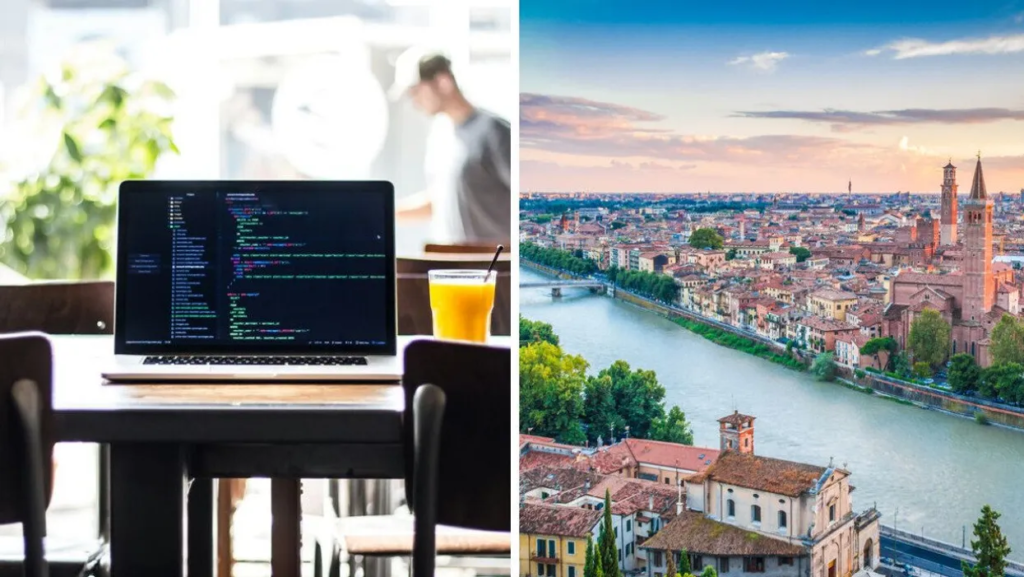As the world embraces remote work, Italy has become an attractive destination for digital nomads. Its rich history, picturesque landscapes, and renowned cuisine offer an appealing lifestyle, while the cost of living in many parts of the country is more affordable than other European destinations. Italy’s digital nomad visa is a game-changer for remote workers looking to experience la dolce vita while continuing their careers. This article will provide a detailed look at the Italy digital nomad visa, including how it works, who qualifies, relevant statistics, and essential tips to make your move smooth.
Understanding the Italy Digital Nomad Visa

In 2022, Italy officially introduced its digital nomad visa, designed to allow non-EU remote workers to live and work in the country. This visa is part of Italy’s broader effort to attract international professionals, stimulating local economies, especially in rural areas that have faced depopulation.
While Italy has long been a destination for tourists, the digital nomad visa provides an opportunity for long-term stays, making it an ideal choice for freelancers, entrepreneurs, and remote employees from outside the European Union. Whether you’re drawn by the rolling hills of Tuscany, the coastal towns of the Amalfi Coast, or the bustling cities of Rome and Milan, this visa opens the door to long-term work-life balance in one of Europe’s most beautiful countries.
Read also: Top 5 Best Places to Visit in Rome, Italy
Who Is Eligible for the Italy Digital Nomad Visa?

Eligibility for the Italy digital nomad visa depends on several key factors. The visa is specifically aimed at non-EU citizens who are working remotely for a company or clients outside of Italy. Here’s a breakdown of the eligibility requirements:
- Remote Worker: Applicants must be employed or have freelance clients outside of Italy. You cannot work for an Italian company under this visa.
- Stable Income: You need to demonstrate that you earn a sufficient income to support yourself during your stay. The exact amount required has not been officially set, but a rough benchmark is around €30,000 annually. This is based on similar income requirements for other long-term visas.
- Health Insurance: Applicants must have comprehensive health insurance coverage valid in Italy. This is essential for ensuring that you can cover any medical costs during your stay.
- No Criminal Record: A clean criminal background is necessary, as with most visa applications.
- Tax Compliance: As a digital nomad, you may be required to declare your income and pay taxes in Italy, depending on the length of your stay and your income source. More on this below.
Keep reading: Digital Nomad Visa for Spain: Everything You Need to Know
Duration of the Italy Digital Nomad Visa

The Italy digital nomad visa typically grants a stay of one year, with the option to renew it for a second year. After the initial one-year period, you’ll need to reapply and meet the same income, insurance, and tax requirements to continue your stay.
The Application Process
Applying for the Italy digital nomad visa requires a series of steps and documents. While the process may seem lengthy, proper preparation will make it manageable. Here’s what you’ll need:
- Proof of Income: As mentioned, you’ll need to provide evidence of a stable income, usually via bank statements, pay stubs, or client contracts.
- Employment Contract or Client Agreements: If you’re employed, you must submit your employment contract, showing that your work is entirely remote. Freelancers will need to show contracts or agreements with their clients.
- Valid Passport: Your passport should have at least six months of validity remaining from the date you apply.
- Health Insurance: A copy of your health insurance policy that covers you in Italy for the duration of your stay.
- Criminal Background Check: You’ll need to provide a background check from your home country.
- Application Form: Fill out the digital nomad visa application, which is available on the official Italian consulate websites.
Read this article: Portugal Nomad Visa: Who is Eligible and How to Apply
Italy’s Appeal for Digital Nomads

Why choose Italy as your digital nomad destination? There are plenty of reasons why Italy is becoming a top choice for remote workers. Here’s why it stands out:
- Cultural Richness: Italy’s deep-rooted history and culture are irresistible. From the Colosseum in Rome to the art museums of Florence, you’re never far from world-class landmarks. Many cities have retained their historical charm while offering modern conveniences, making it an ideal place for digital nomads who want to live in a culturally immersive environment.
- Gastronomy: Italy is synonymous with incredible food. Imagine working remotely while savoring authentic pizza, pasta, or gelato. Whether you’re in a rural village or a bustling city, the food scene is unmatched.
- Scenic Diversity: Whether you prefer the Alps, the Tuscan countryside, or coastal living, Italy offers a wide variety of landscapes to suit different lifestyles. Many digital nomads choose to live in less touristy towns like Bologna or Bari, which still offer excellent services and infrastructure but with a more laid-back atmosphere.
- Cost of Living: While Italy has expensive cities like Milan and Rome, there are many affordable regions where the cost of living is much lower. Southern Italy, for example, offers beautiful coastal towns and lower rental prices, making it possible to enjoy a high quality of life on a moderate income.
- Connectivity: Italy offers reliable high-speed internet in most urban areas, which is crucial for remote workers. Public spaces like cafes and libraries also provide good connectivity.
Taxes for Digital Nomads in Italy

One important factor to consider as a digital nomad is the tax implications of living in Italy. If you stay in Italy for more than 183 days in a year, you may be considered a tax resident. This means you could be required to pay Italian taxes on your global income. Italy’s income tax rates range from 23% to 43%, depending on your earnings.
However, Italy has tax treaties with many countries to prevent double taxation, so it’s essential to consult with a tax advisor to understand your obligations.
Italy also offers special tax regimes for highly skilled workers, which could provide significant tax reductions for eligible individuals. For example, the Impatriati tax regime offers a 70% reduction in taxable income for up to five years for new residents who bring their skills to Italy. This can be extended for an additional five years under specific conditions.
Statistics on Digital Nomads in Italy

- Digital Nomads Worldwide: There are currently an estimated 35 million digital nomads globally, a figure that has grown significantly since the start of the COVID-19 pandemic. The flexibility of remote work has given rise to this new lifestyle, with professionals looking for better work-life balance in scenic destinations.
- Italy as a Digital Nomad Destination: According to a survey by Nomad List, Italy ranks in the top 10 destinations for digital nomads in Europe. Popular cities include Rome, Florence, and Milan, but many nomads are also exploring smaller towns and coastal areas for a quieter, more relaxed lifestyle.
- Cost of Living: The cost of living in Italy varies widely depending on the region. For example, the average rent for a one-bedroom apartment in Milan is around €1,200 per month, while in southern cities like Bari or Palermo, it can be as low as €500-€700. Food and transportation costs are also significantly lower in rural areas compared to major cities.
Tips and Advice for Digital Nomads in Italy
- Choose the Right Location: Italy’s regions are diverse, and the lifestyle you want will depend on where you live. For a vibrant city atmosphere, consider Rome or Milan. If you prefer a quieter lifestyle with stunning landscapes, look at regions like Umbria, Tuscany, or Sicily.
- Learn Basic Italian: While many Italians speak English, especially in larger cities, knowing basic Italian will go a long way in rural areas and help you integrate into the local culture more easily.
- Stay Connected: Italy’s internet infrastructure is generally reliable, but it’s a good idea to check the internet speed in your chosen location before committing to long-term accommodation. In some rural areas, connections can be slower or less reliable.
- Embrace the Italian Work-Life Balance: Italy is known for its relaxed pace of life, with long lunches and time spent with family and friends. Try to adapt to the local rhythm, as it’s a big part of the country’s charm.
- Understand Healthcare: Italy has a public healthcare system that ranks among the best in the world. As a digital nomad, you’ll need to ensure you have private health insurance, but for those who plan to stay long-term, looking into how the public system works could be beneficial.
- Budget for Taxes: Consult with a tax professional before moving to Italy to understand your tax obligations. If you’re staying for more than 183 days, you could be liable for Italian taxes, so make sure to plan for this in your financial calculations.
- Travel within Italy: One of the best perks of living in Italy is how easy it is to travel. Use your weekends to explore nearby cities, take a trip to the beach, or hike in the mountains. Italy’s train network makes it easy to visit other regions, and domestic flights are relatively inexpensive.
- Stay Organized with Your Visa: Visa processes can take time, and it’s essential to stay on top of deadlines for renewing your visa or gathering documents. Keep copies of all important documents and be proactive in maintaining your visa status.
Keep reading : Top 10 Most Visited Cities in Italy








